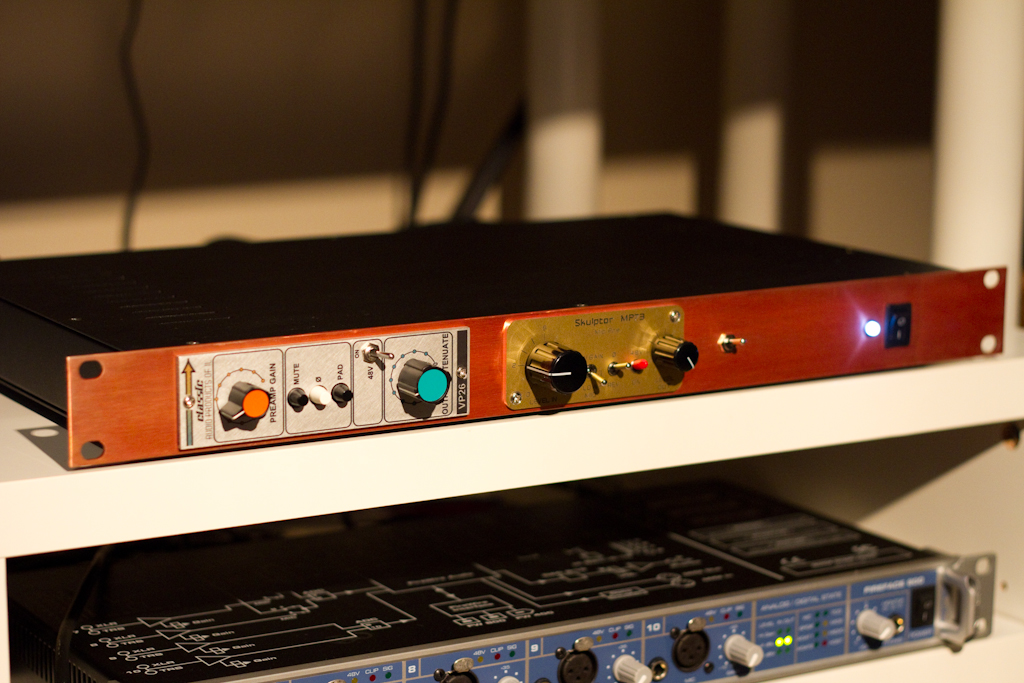mitsos said:
nice! I'd like to see more info on the anodizing process if you don't mind?
Thanks for you interest mitsos, sure.
mitsos said:
Like what acid did you use (something like sulfuric or something I think?).
I used Sulfuric Acid, specifically I believe it was 250g per litre in it's "pure" strength. Alledgedly it's actually now illegal to obtain over the counter in Australia, except for really really specific circumstances ( that we weren't aware of.... ). We got some from a hardware store. We explained what we were doing and they agreed to give us some ( they gave us a litre of it for free, because they would legally not ALLOWED to SELL it to us, but there's no law to say they can't GIVE it to us.... Go figure.... ). Apparently the law is written to assume that everyone is going to use it for some sort of illicit drug manufacture ( everyone's a freaking mastermind of something bad, great assumption.... )
mitsos said:
It seems really simple the way you describe it on your site, but here you say it's quite a lot of work, so I'm not sure I want to try?
It's actually very dangerous, which is a better description than "a lot of work", but I didn't want to write that in case my Mum read it ( haha ). The process generates a cloud of hydrogen gas ( admittedly a low concentration, but without adequate ventilation, it's definitely combustible in regular air.... ), the Surfuric acid at those strengths can literally shed the skin from your hands ( so you HAVE to wear gloves and be VERY careful, or you could end up in hospital with 3rd degree burns.... ), and handling the red die itself was almost as scary as it stains IMPOSSIBLY impressively if you get the tiniest amount of it anywhere. So transferring the substances and making the vessels to hold them is crucial, so you really really have to be careful.
In that way however, it's rather similar to mains, so with proper precautions, and providing you can obtain the raw ingredients, it's fine.
Also, you really need to fill the anodizing vessel with the demineralized water BEFORE you add the sulfuric acid, else you can make the acid boil, and potentially go into thermal runaway, which is bad.... Do things very slowly.... And have a second person there with a hose at all times ready for a diluting spray of water should it be needed.
mitsos said:
I've read most times people use lead as the cathode?
I hadn't heard that before, the guy who walked me through the process said he'd read and had best success when the cathode was precisely the same alloy as the material forming the anode.
We didn't have that, the closest we had was an aluminium plate most likely not even vaguely close.... hence the anodization wasn't as strong as it could have been, and in real life the red is much duller than I'd hoped for, but a very nice and very interesting finish regardless. It's actually got a great orange tinge to it that's held up very very well.
mitsos said:
Was your PSU 12V? Is it true that the more amps the better?
Since voltage is a function of current and resistance, there's no set voltage. Anodization changes directly the resistance of the object in question.
The current calculation is important, as is the volume of fluid, the size of the object to be anodized and the power supply at hand. My friend used an on-line anodizing calculator ( I'll ask for the link if you'd like ) that said to use 1hr at 2.5AMPs from a PSU set to maintain constant current. The voltage changes throughout the process from low ( object being anodized has a high resistance ), to high, ( as the object becomes anodized, it's resistance drops markedly and this can be used to used to measure when it's "done", by reading the changing voltage off of the lab PSU ).
mitsos said:
THANKS! My vocalist is VERY happy about it. I made it so she could record professionally at home with an SM7b - since she isn't a fan of the studio environment ( which I don't blame her for ), and I do whatever it takes to get the best take. I'll be receiving my first takes to work with from this device tomorrow, so I'm SUPER excited!
























![Electronics Soldering Iron Kit, [Upgraded] Soldering Iron 110V 90W LCD Digital Portable Soldering Kit 180-480℃(356-896℉), Welding Tool with ON/OFF Switch, Auto-sleep, Thermostatic Design](https://m.media-amazon.com/images/I/41gRDnlyfJS._SL500_.jpg)









